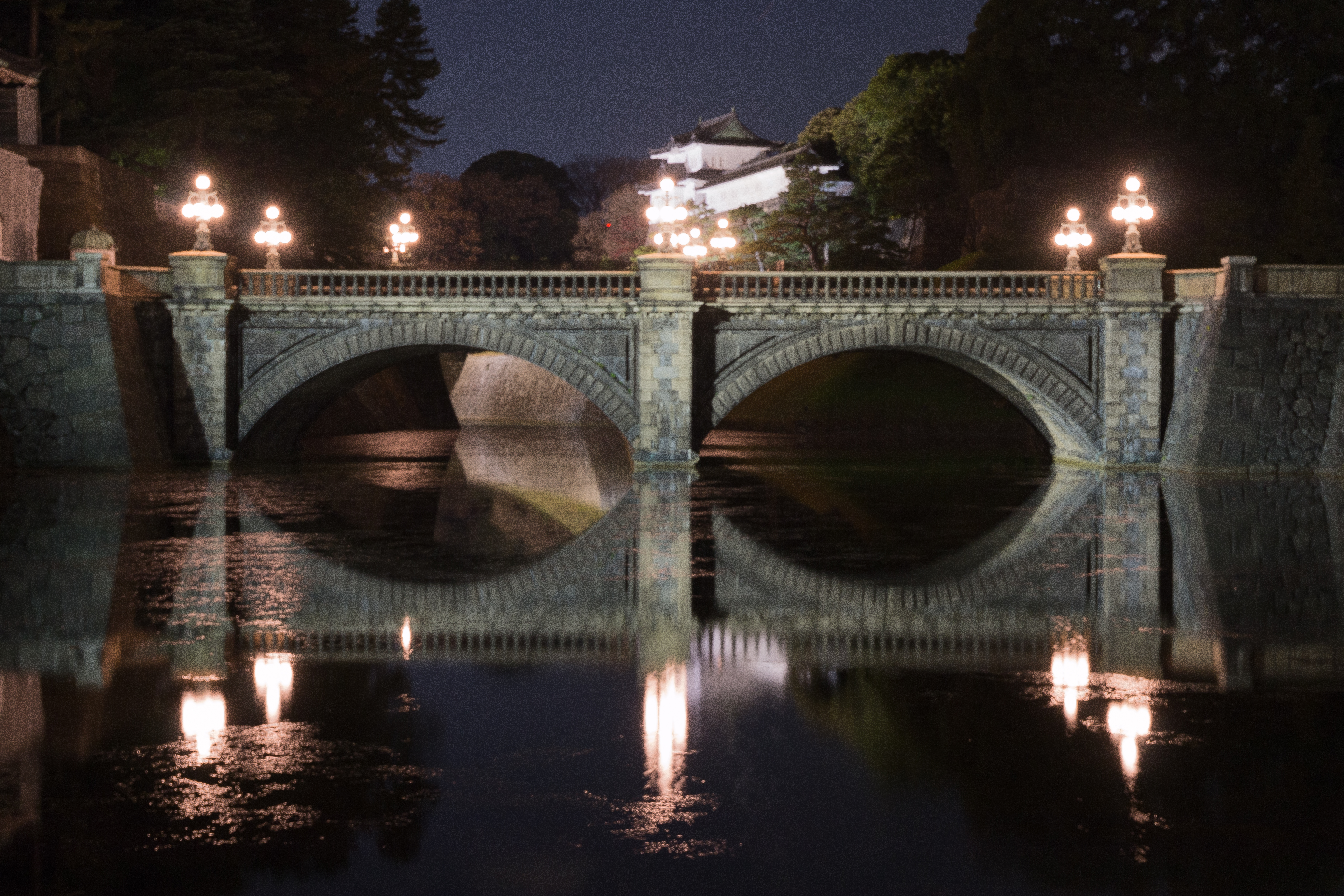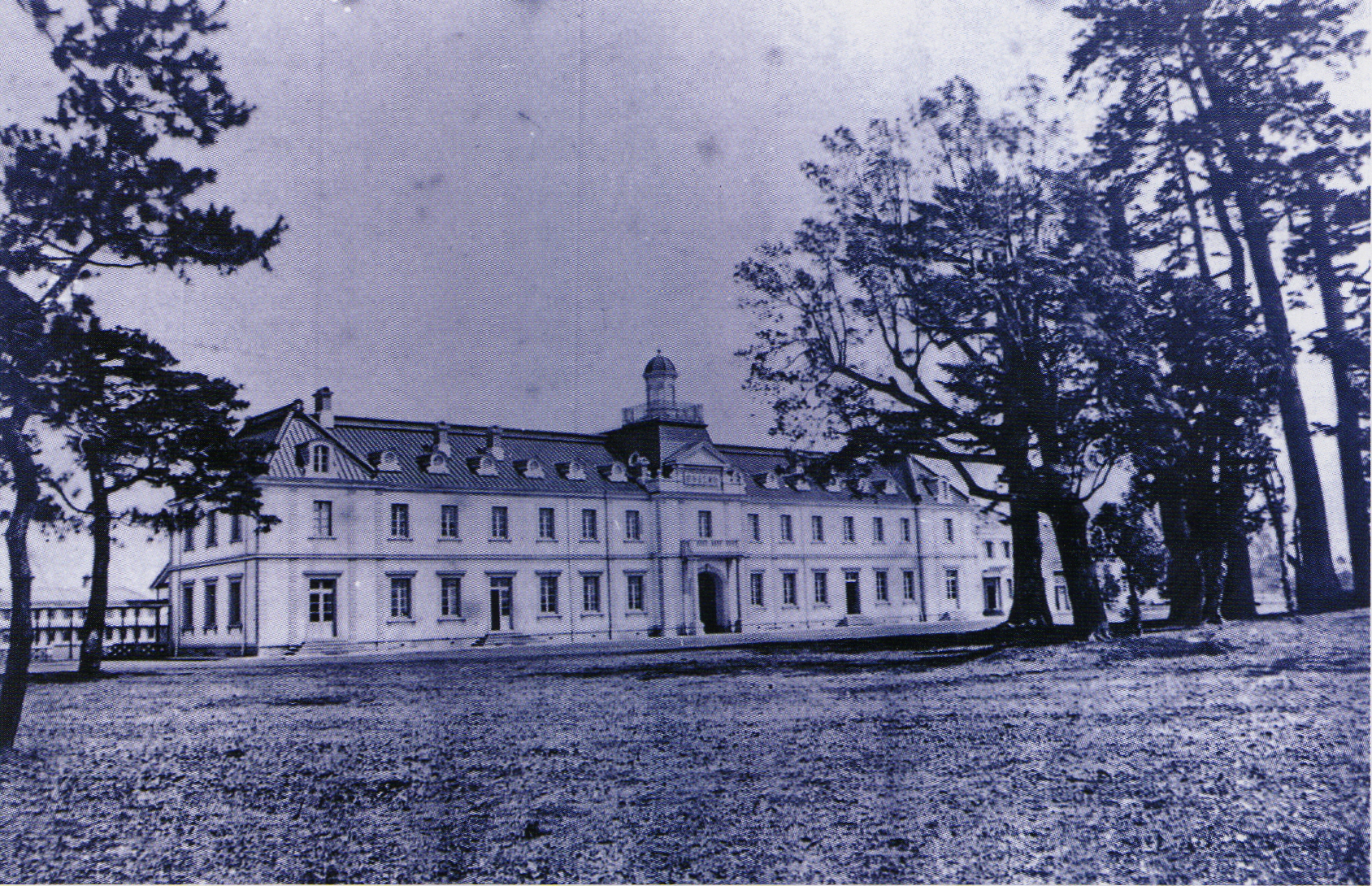|
Ichigaya Station
is a railway station in Chiyoda, Tokyo, Japan. Lines The ground-level section of the station is managed by the East Japan Railway Company (JR East), and the underground sections are managed by Tokyo Metro and Tokyo Metropolitan Bureau of Transportation (Toei Subway). The station is served by the JR Chūō-Sōbu Line, Tokyo Metro Yūrakuchō Line, Tokyo Metro Namboku Line, and Toei Shinjuku Line. Chūō Line (Rapid) services pass the station. Ichigaya Station is numbered Y-14 on the Yurakucho Line, N-09 on the Namboku Line, and S-04 on the Shinjuku Line. Platforms JR East File:Ichigayastationplatform-andtrain-july13-2015.jpg, Chuo-Sobu Line platforms, 2015 File:JR_Chuo-Main-Line_Ichigaya_Station_Platform.jpg, Chuo-Sobu Line platforms, 2021 Tokyo Metro File:Yurakucho Line Ichigaya Station platform.jpg, Yurakucho Line platforms File:TokyoMetro-N09-Ichigaya-station-platform.jpg, Namboku Line platforms Toei Subway File:Toei-subway-S04-Ichigaya-station-platform-2017070 ... [...More Info...] [...Related Items...] OR: [Wikipedia] [Google] [Baidu] |
Chiyoda, Tokyo
is a Special wards of Tokyo, special ward located in central Tokyo, Japan. It is known as Chiyoda City in English language, English.Profile ." ''City of Chiyoda''. Retrieved on December 28, 2008. It was formed in 1947 as a merger of Kanda, Tokyo, Kanda and Kōjimachi wards following Tokyo City's Local Autonomy Act, transformation into Tokyo Metropolis. The modern Chiyoda ward exhibits contrasting Shitamachi and Yamanote geographical and cultural divisions. The Kanda area is in the core of Shitamachi, the original commercial center of Edo-Tokyo. On the other hand, the western part of the Kōjimachi area typically represents a Yamanote district. Chiyoda consists of the Tokyo Imperial Palace, Imperial Palace and a surrounding radius of about a kilometer. As of October 2020, the ward has a p ... [...More Info...] [...Related Items...] OR: [Wikipedia] [Google] [Baidu] |
Seibu Ikebukuro Line
The is a railway line of the Japanese private railway operator Seibu Railway. It originates at Ikebukuro Station, a large railway junction in north-western Tokyo, extending to northwest suburbs as far as Tokorozawa, Saitama, and nominally terminates at Agano Station. The Seibu Chichibu Line from Agano to Seibu-Chichibu Station is an extension. The operation is largely divided into two sections: from Ikebukuro to Hannō Station and from Hannō to Seibu-Chichibu Station. The section from Hannō to Seibu-Chichibu is single track, but every station except for Higashi-Hanno has passing loops, and trains may pass each other at any stop. There is also a passing loop inside a tunnel where the signal controls bi-directional operation. The rest of all the lines is double track with Japanese 1067 mm gauge. Branch lines The Ikebukuro Line has three branches with through operation, apart from the Seibu Chichibu Line. ; Toshima Line :1.0 km length, with Local trains through from Ike ... [...More Info...] [...Related Items...] OR: [Wikipedia] [Google] [Baidu] |
Stations Of East Japan Railway Company
Station may refer to: Agriculture * Station (Australian agriculture), a large Australian landholding used for livestock production * Station (New Zealand agriculture), a large New Zealand farm used for grazing by sheep and cattle ** Cattle station, a cattle-rearing station in Australia or New Zealand **Sheep station, a sheep-rearing station in Australia or New Zealand Communications * Radio communication station, a radio frequency communication station of any kind, including audio, TV, and non-broadcast uses ** Radio broadcasting station, an audio station intended for reception by the general public ** Amateur radio station, a station operating on frequencies allocated for ham or other non-commercial use ** Broadcast relay station ** Ground station (or Earth station), a terrestrial radio station for extraplanetary telecommunication with satellites or spacecraft ** Television station * Courier station, a relay station in a courier system ** Station of the ''cursus publicus'', a ... [...More Info...] [...Related Items...] OR: [Wikipedia] [Google] [Baidu] |
Chūō Main Line
The , commonly called the Chūō Line, is one of the major trunk railway lines in Japan. It connects Tokyo and Nagoya, although it is the slowest direct railway connection between the two cities; the coastal Tōkaidō Main Line is slightly faster, and the Tōkaidō Shinkansen is currently the fastest rail link between the cities. The eastern portion, the , is operated by the East Japan Railway Company (JR East), while the western portion, the , is operated by the Central Japan Railway Company (JR Central). The dividing point between the two companies is , where express trains from both operators continue to the Shinonoi Line towards the cities of Matsumoto and Nagano. Compared to the huge urban areas at either end of the Chūō Line, its central portion is very lightly traveled; the Shiojiri-Nakatsugawa corridor is only served by one limited express and one local service per hour. The Chūō Main Line passes through the mountainous center of Honshu. Its highest point (near ) ... [...More Info...] [...Related Items...] OR: [Wikipedia] [Google] [Baidu] |
Creatures Inc
Creature often refers to: * An animal, monster, or alien Creature or creatures may also refer to: Film and television * ''Creature'' (1985 film), a 1985 science fiction film by William Malone * ''Creature'' (miniseries), a 1998 TV movie about an amphibious shark-like monster * ''Creature'' (1999 film), a 1999 documentary by Parris Patton * '' Alien Lockdown'', a 2004 television film that was shown under the title ''Creature'' via Sci-Fi Channel in UK * ''Creature'' (2011 film), a 2011 horror film * '' Creature 3D'', a 2014 Hindi film directed by Vikram Bhatt * ''The Creature'' (film), a 1924 German silent film Literature * ''Creature'', a 1989 novel by John Saul * ''Creature'', a 1997 novel by Peter Benchley, a reissue of the 1994 novel ''White Shark The great white shark (''Carcharodon carcharias''), also known as the white shark, white pointer, or simply great white, is a species of large mackerel shark which can be found in the coastal surface waters of all the ma ... [...More Info...] [...Related Items...] OR: [Wikipedia] [Google] [Baidu] |
Japan Go Association
The Nihon Ki-in (), also known as the Japan Go Association, is the main organizational body for Go in Japan, overseeing Japan's professional system and issuing diplomas for amateur dan rankings. It is based in Tokyo. The other major Go association in Japan is Kansai Ki-in. Its innovations include the Oteai system of promotion, time limits in professional games, and the introduction of issuing diplomas to strong amateur players, to affirm their ranks. History The Nihon Ki-in was established in July 1924. The first president of the Nihon Ki-in was Makino Nobuaki, a great Go patron himself, with Okura Kishichiro serving as vice president. The vast majority of pros at the time joined the fledgling organization, excepting the Inoue faction in Osaka and Nozawa Chikucho. A brief splinter group called Kiseisha was created soon after the Nihon Ki-in was formed, but most of the players involved had returned to the Nihon Ki-in within a couple of years. Then in 1950, its western branch ... [...More Info...] [...Related Items...] OR: [Wikipedia] [Google] [Baidu] |
Ministry Of Defense (Japan)
The is an executive department of the Government of Japan responsible for preserving the peace and independence of Japan, and maintaining the country’s national security and the Japan Self-Defense Forces. The ministry is headed by the Minister of Defense, and is the largest ministry in the Japanese government. The ministry is headquartered in Ichigaya, Shinjuku, Tokyo, and is required by Article 66 of the Constitution to be completely subordinate to civilian authority. Its head has the rank of Minister of State. He is assisted by two vice ministers, one parliamentary and one administrative; and the internal bureaus. The highest figure in the command structure is the Prime Minister, who is responsible directly to the National Diet. The MOD, alongside the Ministry of Foreign Affairs, work on crafting Japanese security policy. In a national emergency, the Prime Minister is authorized to order the various components of the Japan Self-Defense Forces (JSDF) into action, sub ... [...More Info...] [...Related Items...] OR: [Wikipedia] [Google] [Baidu] |
Saitama Rapid Railway Line
The is a mostly underground rapid transit line in Japan operated by the third sector operating company Saitama Railway Corporation. Funded by Saitama Prefecture, local municipal governments, and Tokyo Metro, it forms a continuation of the Tokyo Metro Namboku Line, starting at Akabane-iwabuchi Station in Tokyo and ending at Urawa-Misono Station in Saitama. The line is used as the main means of transportation to Saitama Stadium 2002. On 27 November 2015, the route was nicknamed the "Saitama Stadium Line". The line symbol used in the station numbering is "SR". Overview This line allows trains from the Tokyo Metro Namboku Line to operate beyond Akabane-iwabuchi Station into Saitama Prefecture and ending at Urawa-Misono Station. Most of the line is underground, only Urawa Misono Station and adjacent depots are on the surface. It connects the eastern and northern part of Kawaguchi to Tokyo; areas that were previously only served by buses. Planning for the line stated in 1972 ... [...More Info...] [...Related Items...] OR: [Wikipedia] [Google] [Baidu] |
Tobu Tojo Line
is a Japanese commuter railway and ''keiretsu'' holding company in the Greater Tokyo Area as well as an intercity and regional operator in the Kantō region. Excluding the Japan Railways Group companies, Tobu's rail system is the second longest in Japan after Kintetsu. It serves large portions of Saitama Prefecture, Gunma Prefecture and Tochigi Prefecture, as well as northern Tokyo and western Chiba Prefecture. The Tobu Railway Company is listed in the First Section of the Tokyo Stock Exchange and is a constituent of the Nikkei 225 index. The Tobu corporate group is also engaged in road transportation (bus/taxi), real estate, and retail. It is the owner of the Tokyo Skytree, the tallest tower in the world. The company is a member of the Fuyo Group ''keiretsu''. The name "Tobu" is formed from the kanji for east (''東'') and Musashi (''武''蔵), the initial area served. History Tobu is one of the oldest railway companies in Japan. It was established in November 1897 and b ... [...More Info...] [...Related Items...] OR: [Wikipedia] [Google] [Baidu] |
Seibu Ikebukuro Logo
{{Disambig ...
Seibu may refer to: *Seibu Holdings or a subsidiary thereof **Saitama Seibu Lions **Seibu Railway *Sogo & Seibu **Seibu Department Stores, owned by Sogo & Seibu *Seibu Kaihatsu was a Japanese manufacturer of arcade games. The company was founded in 1982 in video gaming, 1982 at Chiyoda, Tokyo, Chiyoda-ku, Tokyo, Japan as , but changed to its current name sometime in 1984. It is currently owned by Hitoshi Hamada. One ... [...More Info...] [...Related Items...] OR: [Wikipedia] [Google] [Baidu] |
Tokyo, Tokyo
Tokyo (; ja, 東京, , ), officially the Tokyo Metropolis ( ja, 東京都, label=none, ), is the capital and largest city of Japan. Formerly known as Edo, its metropolitan area () is the most populous in the world, with an estimated 37.468 million residents ; the city proper has a population of 13.99 million people. Located at the head of Tokyo Bay, the prefecture forms part of the Kantō region on the central coast of Honshu, Japan's largest island. Tokyo serves as Japan's economic center and is the seat of both the Japanese government and the Emperor of Japan. Originally a fishing village named Edo, the city became politically prominent in 1603, when it became the seat of the Tokugawa shogunate. By the mid-18th century, Edo was one of the most populous cities in the world with a population of over one million people. Following the Meiji Restoration of 1868, the imperial capital in Kyoto was moved to Edo, which was renamed "Tokyo" (). Tokyo was devastate ... [...More Info...] [...Related Items...] OR: [Wikipedia] [Google] [Baidu] |


_5.jpg)


